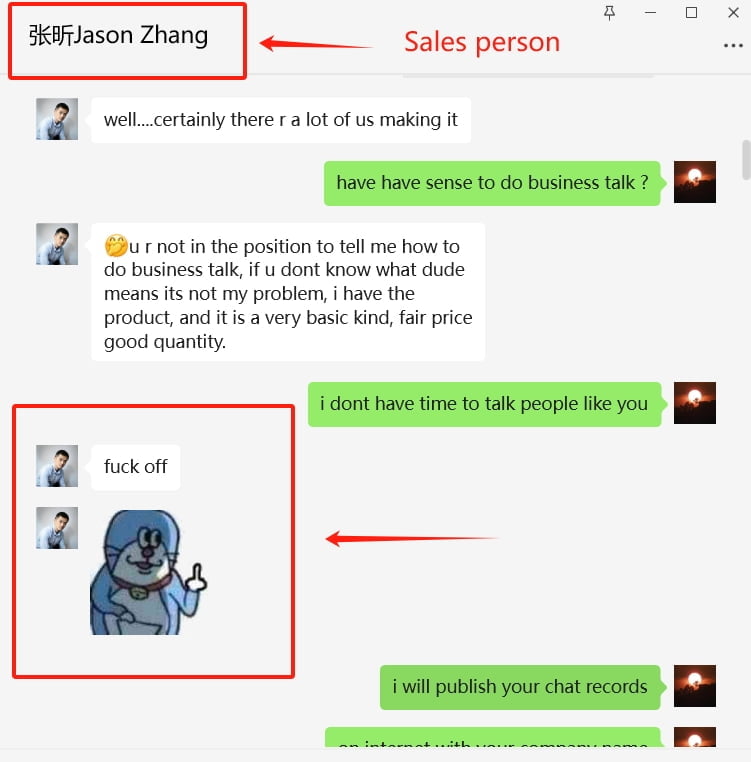In the intricate world of commerce, the salesperson is your first point of contact with a company. Their role is not just to sell but to build trust, understand your needs, and guide you toward the best solutions. However, not all salespeople uphold these values. Dealing with a bad salesperson can be fraught with risks and complications.
The Red Flags of a Bad Salesperson
1. Lack of Basic Courtesy and Introduction:
A competent salesperson should greet you warmly, introduce themselves, and give you a brief overview of their company and products. If a salesperson skips these fundamental steps, it’s a glaring red flag. They fail to set a professional tone, making you question their credibility right from the start.
2. Poor Communication:
Timely responses are crucial in sales. A salesperson who never replies on time or disappears mid-conversation creates a sense of unease. Consistent communication is essential for building trust and ensuring a smooth transaction. When this is missing, it indicates a lack of commitment and reliability.
3. Inability to Understand Your Needs:
A good salesperson listens and recommends products that fit your requirements. In contrast, a bad salesperson might just send you a generic catalog without considering your specific needs. This approach shows a lack of interest in providing genuine value to the customer.
4. Unprofessionalism:
Professionalism is key in any interaction. Salespeople who exhibit unprofessional behavior, such as being late, dressing inappropriately, or speaking rudely, undermine the trust and respect essential in a business relationship.
5. Bad Attitude:
A salesperson with a negative attitude can turn the entire buying experience sour. Their lack of enthusiasm and dismissive nature can make you feel undervalued and unimportant.
6. Pushiness:
Overly aggressive sales tactics can be off-putting. A pushy salesperson pressures you to make quick decisions without giving you the time and space to consider your options, which can lead to regretful purchases.
7. Lack of Listening Skills:
Effective salespeople listen more than they talk. A salesperson who interrupts, talks over you, or fails to understand your needs is likely to miss crucial details, resulting in poor recommendations.
8. Lack of Social Skills:
Interpersonal skills are vital for building rapport. Salespeople who lack these skills may struggle to connect with you, making the interaction feel transactional rather than relational.
9. Lack of Technical Knowledge:
Salespeople should be knowledgeable about their products. Those who cannot answer your questions or provide detailed information demonstrate a lack of expertise, which can erode your confidence in the product.
10. Fear of Rejection:
Salespeople who fear rejection may avoid difficult conversations or fail to follow up, leaving you without the support or information you need.
11. Sense of Entitlement:
A salesperson with a sense of entitlement may act as if they deserve your business without earning it. This attitude can come across as arrogant and dismissive.
12. Focusing on Price Instead of Value:
Good salespeople emphasize the value of their products. Those who focus solely on price often fail to highlight the benefits and quality, leading to a less informed purchasing decision.
13. Making Promises They Can’t Keep:
Reliability is crucial. Salespeople who make grand promises but fail to deliver damage the trust and reliability essential in any business relationship.
The Broader Implications
The salesperson is not just an individual; they are the face of the company. If a company doesn’t ensure the quality of its sales force, it raises serious questions about the overall quality of the company’s products and services. Such companies might prioritize quick sales and profits over customer satisfaction and product integrity.
Quality Over Quantity:
A company that employs salespeople who exhibit poor communication and a lack of professionalism is likely more interested in making sales at any cost. They might not care about fostering long-term relationships with customers or maintaining high product standards. This can lead to a cycle of dissatisfaction and mistrust.
Conclusion
In the world of sales, the quality of interaction with a salesperson can make or break your experience. Be cautious when encountering a salesperson who displays any of the red flags mentioned above. Remember, a company that doesn’t invest in the quality of its sales force likely won’t invest in the quality of its products either. Your awareness and discernment are your best tools to avoid potential pitfalls and ensure a satisfactory purchasing experience.




